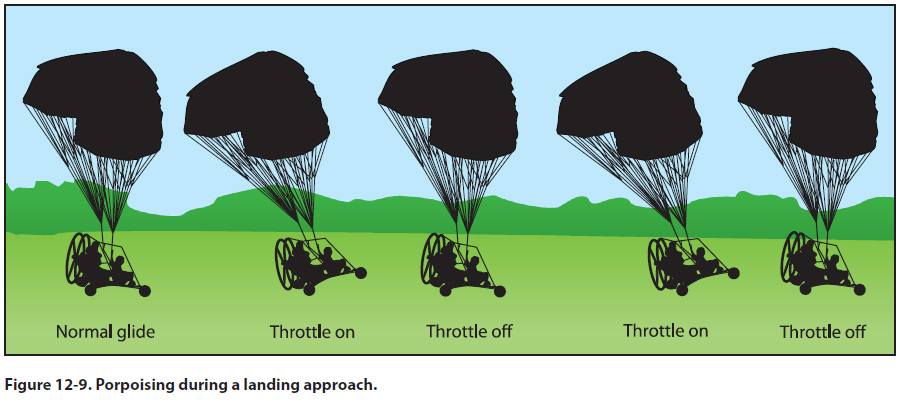|
Chapter 12 — Night, Abnormal, and Emergency Procedures
In-Flight Fire
Considering the flammability of a ram-air wing, it is
easy to realize that in-flight fire—especially an engine
or fuel fire—is one of the most serious emergencies
a PPC pilot can encounter. (Note: An electrical fire
in the front of the cart is unlikely to cause anything
more than an engine failure. Therefore, see “Engine
Failures” above for this specific emergency.) If there
is any sign of fire near the engine, fuel containers, or
fuel lines, do everything possible to reduce the possibilities
of the fire spreading and land as soon as possible.
The necessary procedures are:
• Reduce throttle to idle;
• If possible, shut off fuel valves;
• Shut off magnetos;
• Shut off all electronics;
• Land immediately and stop as quickly as
possible; and
• Evacuate the aircraft immediately.
After landing, get far away. The principal danger after
evacuating the PPC is that the fuel will ignite and explode,
with the potential to injure people at considerable
distances.
Landing Porpoise
Porpoising refers to pitch oscillations, most noticeable
during a landing. These erratic pilot-induced
movements are a result of rapid throttle movements.
This is a common, correctable error pilots need to be
aware of. There is a delay between throttle changes
and pitch changes. Porpoising will result if you overcontrol
the throttle during a landing attempt, causing
pitch oscillations. As a result of over-reacting, the
PPC, which is now dangerously close to the ground, will be further induced into increasing the forward/
rearward swinging oscillations from the pilot throttle
movements. [Figure 12-9]

If this happens, immediately abort the landing and
climb back to pattern altitude. On the next turn to
final, relax and work with a slow, smooth throttle
action.
|

